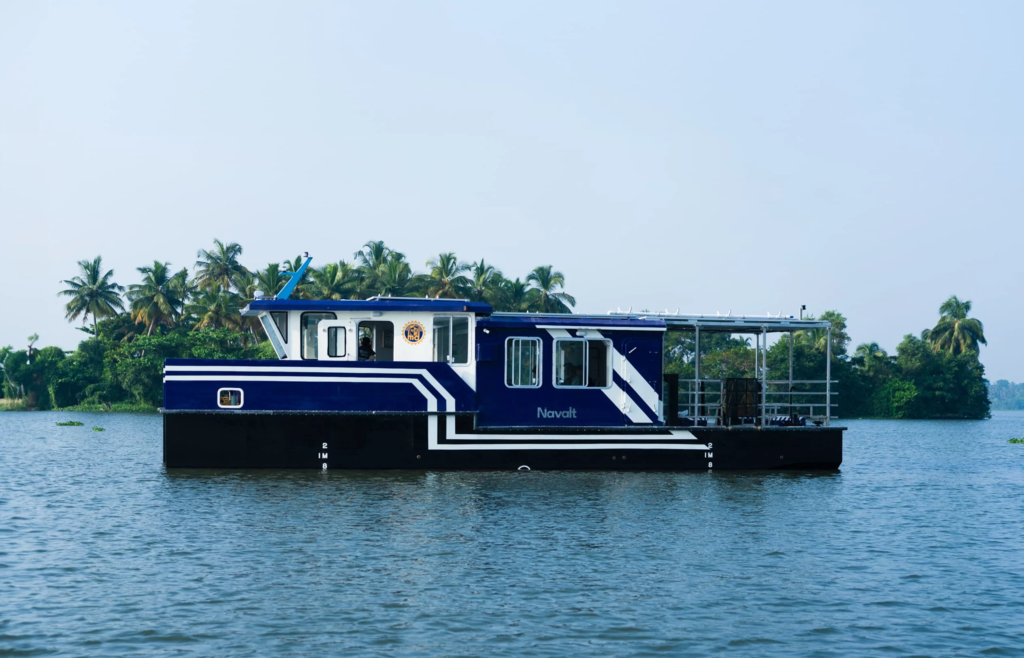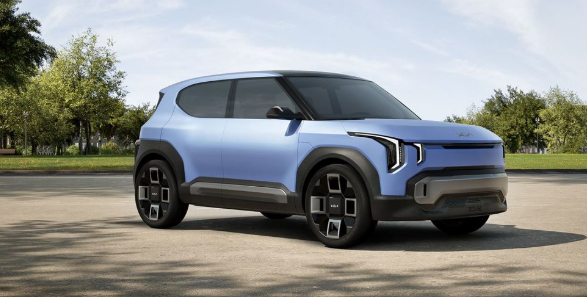In a world increasingly aware of environmental impacts, the maritime industry has found a shining example in India’s Navalt. Navalt, a trailblazer in solar-electric maritime technology, has recently unveiled two remarkable additions to its fleet: Indra and Barracuda. These solar-electric boats are not just vessels; they are harbingers of a sustainable future in maritime travel.
Table of Contents
- Indra: A Solar-Powered Giant
- Barracuda: Speed Meets Sustainability
- The Vision Behind the Innovation
- Kerala’s Green Initiative
- Drop Anchor
Indra: A Solar-Powered Giant
Indra, India’s largest solar-electric boat, is an engineering feat. This double-decker vessel stretches an impressive 26 meters in length and 7 meters in width, comfortably accommodating up to 100 passengers. What sets Indra apart is its propulsion system – powered by two 20 kW motors and sustained by an 80 kWh Manta LFP battery pack. This formidable combination enables a 10-hour continuous journey on a full charge, cruising at a top speed of 7 knots.

One cannot overlook the 25 kW solar panels adorning Indra. They play a crucial role in powering both the boat’s engines and its auxiliary loads. This integration of solar energy into maritime technology reflects a significant step toward reducing carbon footprints in the industry.
During its launch, Shri Roshi Augustine, Kerala’s Minister of Irrigation, highlighted the importance of this innovation. “Indra is more than a boat; it’s a commitment to sustainable tourism,” he remarked.
Barracuda: Speed Meets Sustainability
On the other hand, Barracuda, India’s fastest solar-electric boat, represents a different facet of Navalt’s prowess. This boat is designed to tackle rough sea conditions, thanks to its catamaran hull. It achieves an impressive top speed of 12.5 knots, equipped with twin 50 kW motors and a 6-kW solar panel system for battery charging. Despite its robustness, Barracuda can carry up to 10 passengers, a testament to its efficient design.

Shri Sanjay Kumar Singh of Mazagon Dock Limited expressed his views during the launch, “Barracuda combines the speed with the sustainability, a rare feat in maritime technology.”
The Vision Behind the Innovation
Navalt’s journey began with Aditya, India’s first solar-electric ferry, followed by SRAV, the world’s first solar-electric fishing boat. These milestones, along with Indra and Barracuda, signify Navalt’s commitment to eco-friendly maritime solutions.
Similar Posts
Navalt’s advancements are not merely about reducing environmental pollution. These innovations also offer an economically viable option for boat owners and operators, reducing operational expenses and enhancing profits. Passengers aboard these vessels can expect a serene, vibration-free, and odorless journey, a stark contrast to traditional diesel-powered boats.
Kerala’s Green Initiative
Kerala State Water Transport Department, the proud owner of Indra, demonstrates the state’s dedication to green tourism. Following the success of Aditya, Kerala plans to expand its fleet with 16 more solar-electric vessels, including passenger ferries and ROROs (Roll On/Roll Off ships).
Drop Anchor
As India steps into a new era of maritime travel, these solar-electric boats represent more than technological achievements; they symbolize a conscious shift towards sustainability. As we witness the maiden voyages of Indra and Barracuda, we see the dawn of a new chapter in maritime history, one where luxury, innovation, and environmental consciousness sail together.


















